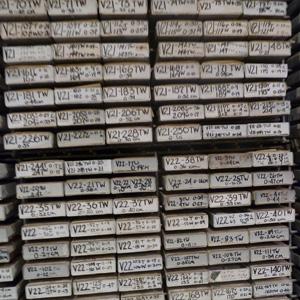Palaeoclimatology facts for kids
Palaeoclimatology is the study of how Earth's climate has changed throughout its long history. It looks at climates from millions of years ago right up to recent times. Because people are more interested in climate change today, studying past climates has become very important.
Scientists cannot go back in time to measure the weather directly. Instead, they use "proxies" to understand past climates. Proxies are natural records that store information about the environment. These records come from many places, like rocks, sediments (layers of dirt and sand), ice cores (long tubes of ice drilled from glaciers), and tree rings. They also study corals, shells, and tiny microfossils. By studying these natural clues, scientists can figure out what Earth's climate and atmosphere were like long ago.
Studying how life and ecosystems changed in the past can help us understand what might happen in the future. For example, scientists look at how climate affected mass extinctions, which are times when many types of plants and animals died out. They also study how life recovered after these big events.
Contents
Major Climate Events in Earth's Past
Scientists know more about recent climate events than those from very long ago. Here are some important climate changes that have happened on Earth:
Early Earth Climates
- Faint Young Sun: Billions of years ago, the Sun was not as bright as it is today. Even so, Earth was warm enough for life, possibly because of more greenhouse gases in the atmosphere.
- Huronian Glaciation: About 2.4 billion years ago, Earth was likely covered almost completely in ice. This "Snowball Earth" event probably happened because of the Great Oxygenation Event, when oxygen built up in the atmosphere.
- Neoproterozoic Snowball Earth: Around 600 million years ago, Earth again experienced a "Snowball Earth" period. This was just before the Cambrian Explosion, a time when many new forms of life appeared.
Major Changes in the Last 500 Million Years
- Carboniferous Rainforest Collapse: About 300 million years ago, huge rainforests covered much of Earth. A sudden climate change caused these forests to shrink, leading to big changes in life.
- Permian–Triassic Extinction Event: This happened about 251 million years ago and was the biggest mass extinction in Earth's history. Climate change was a major cause.
- Oceanic Anoxic Events: At different times, like 120 million and 93 million years ago, parts of the oceans lost most of their oxygen. This led to many sea creatures dying.
- Cretaceous–Paleogene Extinction Event: About 66 million years ago, a giant asteroid hit Earth. This caused huge climate changes, leading to the extinction of the dinosaurs and many other species.
- Paleocene–Eocene Thermal Maximum: Around 55 million years ago, Earth experienced a very rapid and extreme warming period. This event shows how quickly the climate can change.
Recent Climate Shifts
- Younger Dryas (The Big Freeze): About 11,000 years ago, after the last ice age, Earth suddenly got much colder again for a short time.
- Holocene Climatic Optimum: From about 7,000 to 3,000 years ago, Earth was generally warmer than it is today. This period was good for human civilization to develop.
- Climate Changes of 535–536 AD: This was a short but severe cooling event, likely caused by a large volcanic eruption. It led to crop failures and hardship in many parts of the world.
- Medieval Warm Period: From about 900 to 1300 AD, parts of the Northern Hemisphere experienced warmer temperatures. This allowed Vikings to settle in Greenland, for example.
- Little Ice Age: From about 1300 to 1800 AD, many parts of the world experienced cooler temperatures, more glaciers, and harsher winters.
Images for kids
See also
 In Spanish: Paleoclimatología para niños
In Spanish: Paleoclimatología para niños





